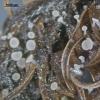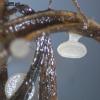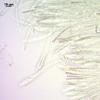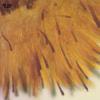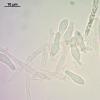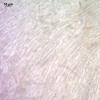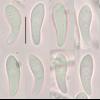
20-12-2025 23:08
Patrice TANCHAUDBonsoir, récolte sur sol sablonneux dans l'arri�

21-12-2025 09:32
Hello.A tiny ascomycete found embedded in wood in

20-12-2025 15:47
Mirek GrycHi.These grew on pine wood that was heavily covere

18-12-2025 21:17
Pol DebaenstThe identification took me to Byssonectria deformi

15-12-2025 07:09
 Danny Newman
Danny Newman
indet. Rutstroemiaceae sp. on unk. fallen leavesMc

19-12-2025 10:10
Patrice TANCHAUDBonjour, récolte réalisée en milieu dunaire, a

18-12-2025 17:23
 Bruno Coué
Bruno Coué
Bonjour,je serais heureux d'avoir votre avis sur c
these very rich apothecia were found on fruit catkins of Salix sp. on wet soil after snow melt. I would appreciate your help with prior identification.
Apothecia stipitate, white to translucent, hymenium and outer surface the same color, up to 0.5 mm high, 0.7 mm broad (disc) and stem 0.2-0.3 mm thick, outer surface shortly pubescent, edge without pronounced hairs; crowded on last year fallen fruit catkins of Salix sp.
Excipulum from textura porrecta, the outer layer mady by cylindrical obtuse thin-walled hyphae filled with refractive valuoles, inner layer of prismatic cells with thickened walls; asci cylindrical, bent, with crozier, with euamyloid pore, 100-120 x 9-12 in vital state; paraphyses cylindrical, evenly enlarged to upper part, where 4 broad, with abundant small VBs in upper part, reacting reddish-brown with IKI; spores subfusoid, heteropolar, slightly bent, 15 (12-15.7) x 4.7 (4-5.4).
Nina.

Hi Nina,
why not Calycina amenti? (Pezizella amenti, Cyathicula amenti).
Best regards from Lothar

this one looks like Crocicreas amenti (Batch) Carpenter, now I dont have a good generic position present.
cheers,
Stip

I do not know why you have such large asci and long spores, but this can only be Cyathicula amenti (formerly Pezizella amenti). Typical spore size is about 9-11 x 3.5-4 µm.
Zotto
Zotto, i have measured additionally another two apothecia and spore size decreased, but not very much (and my microscope calibration checked recently):
13.7 (11.5-15.7) x 4.6 (4-5.4) (n=36).
Nina.

Forgot to say that the apical ring is of the Hymenoscyphus type.
today i have collected this species from another location 1 km apart from the first, and checked the spores again. They are that large too:
Spores 15 (13.5-16.4) x 4.6 (4.2-5), n=20.
That seems that our population of the species has larger spores. Other features are very similar to shown in Zotto's collection.
Here the picture of spores (bar=10 mk).


